Kanishka – A prosperous emperor who tapped into Silk route
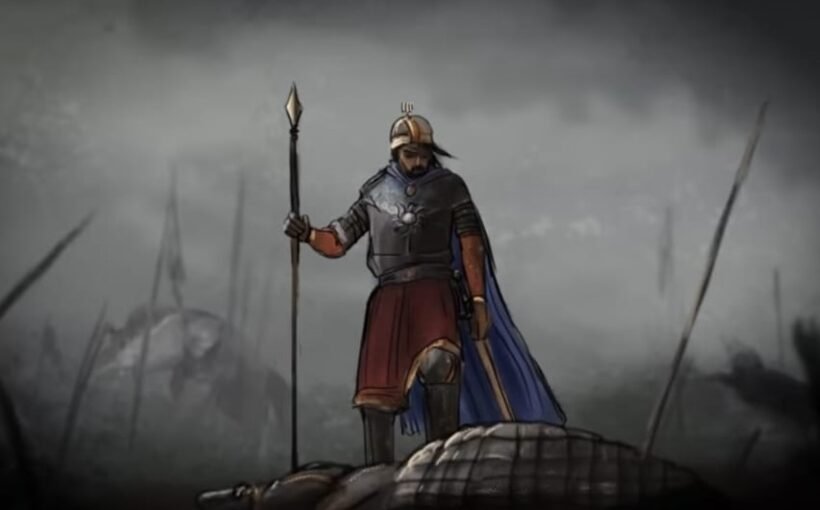
The fall of the Mauryan Empire witnessed the rise of many native rulers. The most important ruling dynasty that succeeded them in the northwest was the Kushanas founded by Kujula Kadphises. The Kushans were a part of the five clans that got divided from the Yuechi tribes (nomadic pastorals in the western China grassland).
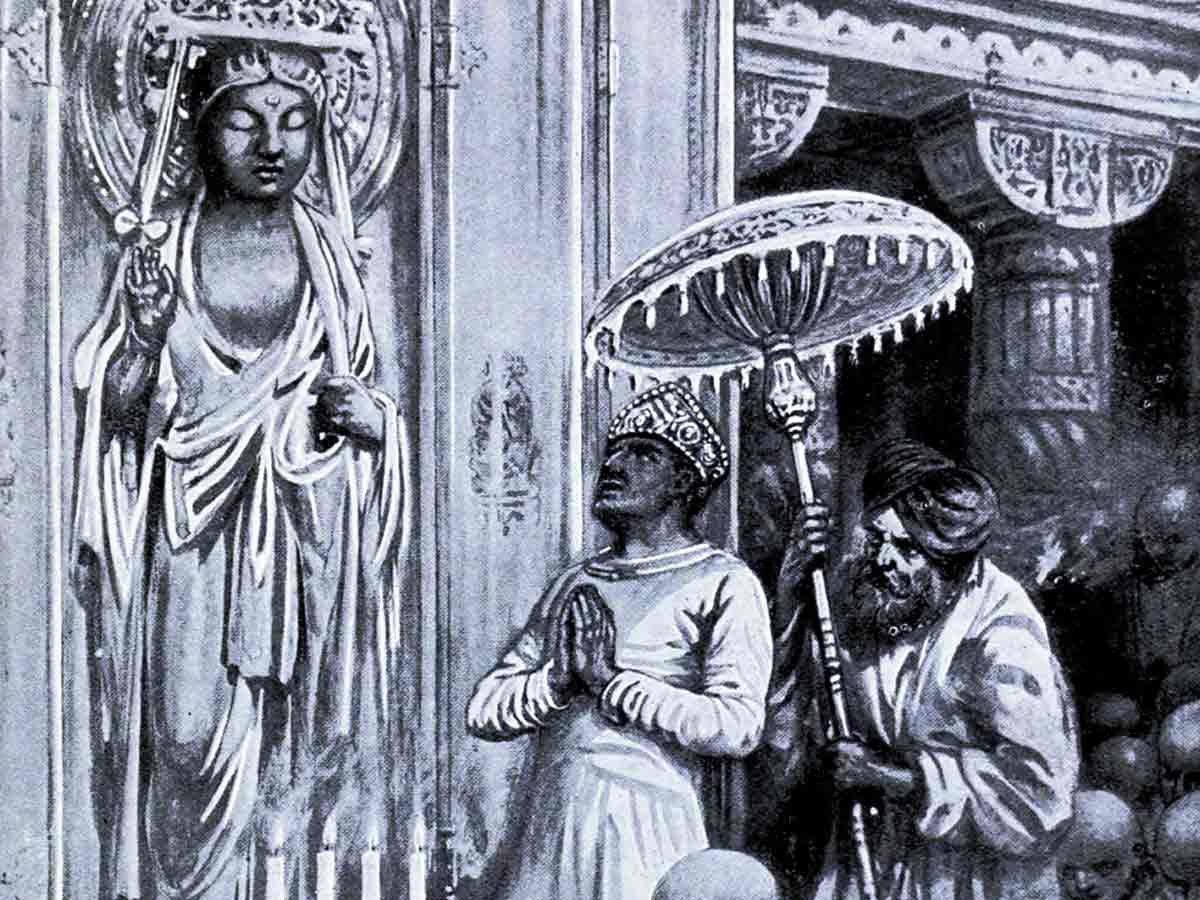
The most famous ruler of the Kushan Dynasty was Kanishka I, the son of the 2nd ruler of Kushana, Vema Kadphises. His mother was a princess from the Parthian Empire. Kanishka’s coins and his statue found near Mathura portray him dressed in a belted tunic, wearing an overcoat and boots. These typical Central Asian outfits of those times indicate his nativity and affinity to its culture.
Kingdom
Kushanas was very much inspired by the Chinese. When the Chinese rulers called themselves the sons of heaven, Kushanas rulers similarly assumed titles like “Devaputra” (sons of God), King of Kings and the Saviour, etc. Kanishka liked to call himself the Son of God. The extent of the Kushana Empire was at its zenith during Kanishka’s reign. It covered present-day Uzbekistan, Tajikistan to Mathura, Kashmir, and Kashi. The primary capital was at Peshawar and the regional capitals were at Taxila, Begram, and Mathura.
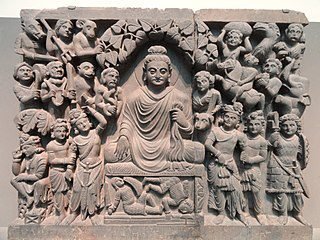
The empire prospered by tapping on the potential of what is known as the silk route. The location favored them to control the trade of Northern India with China and West Asian Kingdoms like the Parthian and the Romans. Textile, gold, precious stones, spices, etc were some of the high-value luxury commodities imported, and commodities like cotton, pearl, ivory, muslin, etc were exported from India. As the trade route was famous for caravans carrying Chinese silk, it got its name “the silk route”.
Kushans issued a large number of gold coins in India. Some of them also feature Greek and Hindu gods apart from Buddha, which can be considered as evidence of religious tolerance during his reign. Kanishka adorned his court with eminent scholars, philosophers, and poets like the famous, Nagarjuna, Asvaghosa, Vasumitra, Agesilous etc. This provided him with valuable guidance and different viewpoints in managing the newly formed Empire.
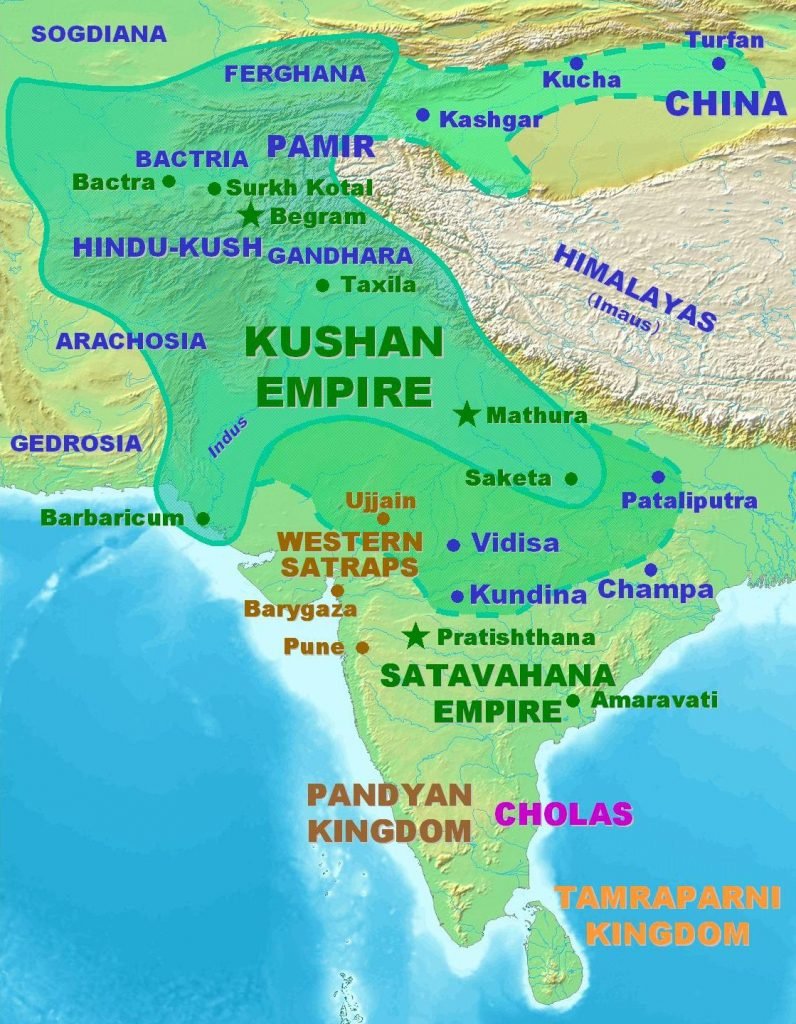
He was guided and advised on religious matters by his court writer Asvaghosa. The 4th Buddhist council (72 AD) was organized by him in Kundalavana, Kashmir where Mahayana Buddhism doctrines were established by bifurcating Buddhism into Mahayana and Hinayana. Mahayana got popular during his reign and image worship, rituals, etc were followed in this sect of Buddhism. In contrast, the Hinayana sect of Buddhism was propagated by Ashoka. And because of his generous patronage and propagation of Buddhism, he was also regarded as the second Ashoka.
Kanishka also sent missionaries to Central Asia, China, and Afghanistan to preach Buddhism there. This was instrumental in bringing Chinese pilgrims like Fa-hien and Hsuan Tsang to India as they mainly came to know more about Buddhism and thereby left valuable records of Indian history. The famous Gandhara and Mathura schools of art became widely popularised during his reign. Since these arts combine the cultural aspects and the style of sculptures found in the region, this created familiarity and acceptance which was instrumental in the propagation of Buddhism.

Also discovered in the remains of Mathura was the headless, handless, red and white spotted sandstone statue of Kanishka clad in coat, standing erect, with his name inscribed on the lower part of the statue. There are multiple versions as to why the statues were found in this bizarre condition without any conclusive theory from any reliable source to quote.
War
Before becoming the second ruler of Kushana, Kanishka served as the governor of a region that is now the western part of Uttar Pradesh. After consolidating the core Kushan Empire, he eliminated his competitors within and got into submission the Kushana governors of Khorasan and Khotan. The military governors of Baluchistan and Sindh accepted his supremacy on their own without any conquest. They also added strength to his army of soldiers for further conquests. The conquest of India started with Kashmir, a place that was close to his heart and he wanted to be buried there after his death. After taking over Kashmir, he founded a town there and called it Kanshipura. He then went on to conquer Magadha Empire’s capital Pataliputra and here is where Asvagosha, a Buddhist philosopher was taken to his court who later became Kanishka’s religious guru.
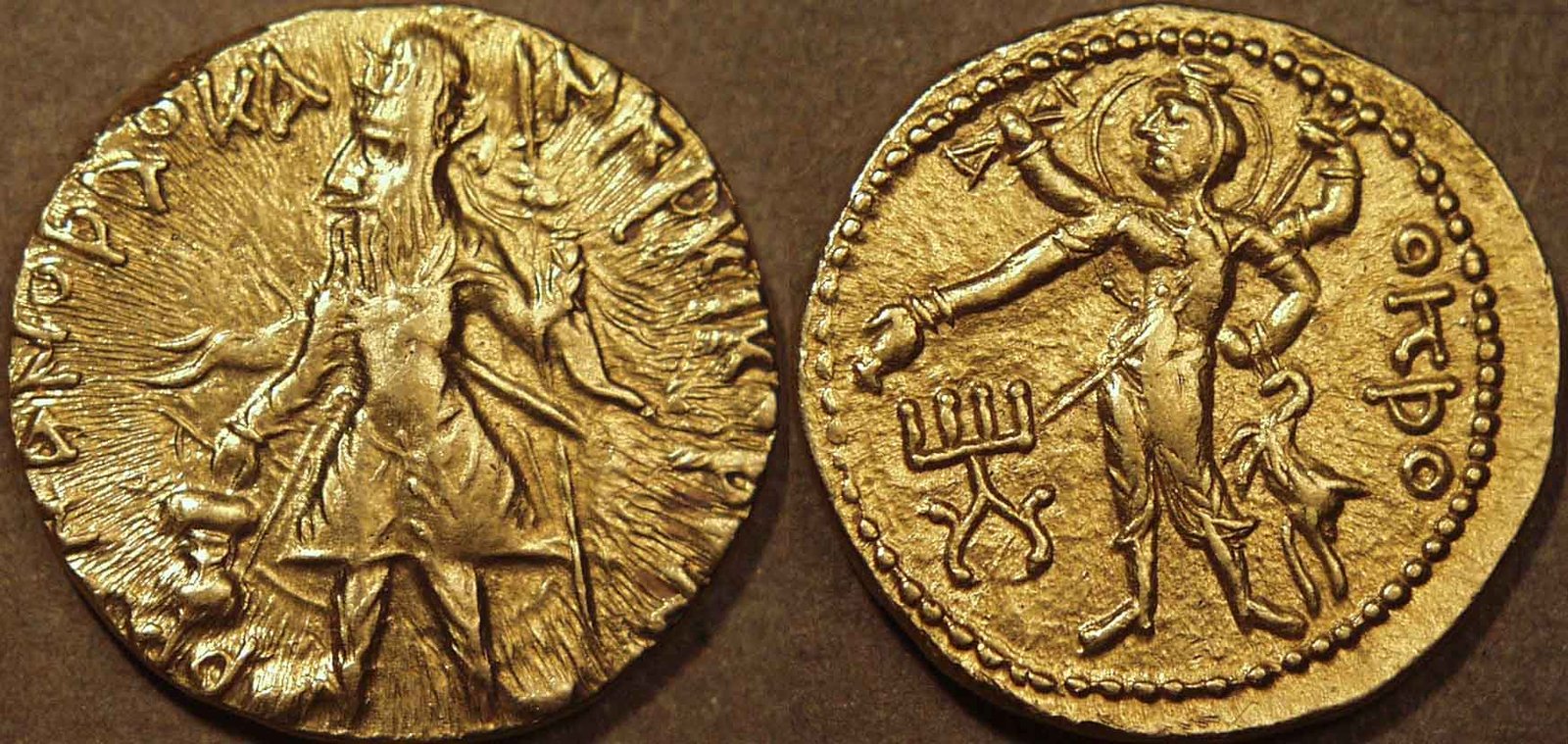
The Han Dynasty of China and the Yeuchi tribe had been having long-term animosity against each other. In fact, the Yeuchi tribe which established Kushana Empire, was forced by the Hans to flee from Central Asia. When the tribes established an empire, this was considered as a challenge by Han Ho-ti, the King of Han Dynasty. He declared war against Kanishka and his general Pan Chao led the army to fight the Kushanas. The war ended with a huge loss for Kanishka and it took him many years to recover from it. To avenge the loss, Kanishka struck back Hans after years of strenuously training his soldier to get them war-ready. The war ended to his favour when the Chinese prince was taken, hostage.
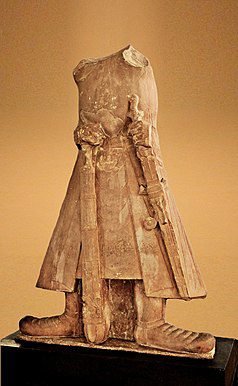
Conclusion
Although he claimed success in the war, it was also his last battle. His own soldiers killed him during the expedition for reasons unknown. It was believed that when Kanishka fell ill, he was smothered by them to death. Thus, ending the Saka era. The Saka era (Salivahana) that was started by Kanishka in 78 AD was adopted by the Government of India. It has been in use since 22nd March 1957 which is also the starting day of the first month Chaitra. There was no major military conquests by his successors and the Empire slowly disintegrated after him.

Much about Kanishka was known only through Chinese and Roman texts as Kushanas did not keep written records or inscriptions. With the decline of Buddhism in India much about him was also forgotten, it however resurfaced following excavations. Although an outsider, the contributions of Kanishka to India is immense especially in the fields of art, sculpture, spirituality, cultural tolerance and improvisation.


